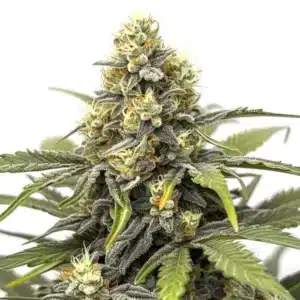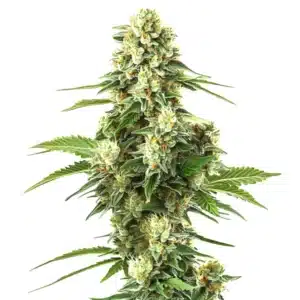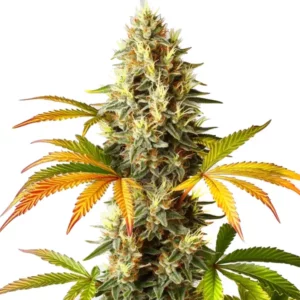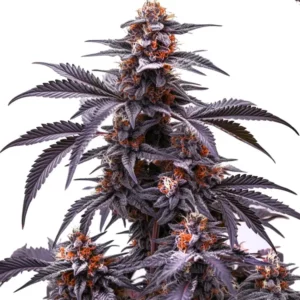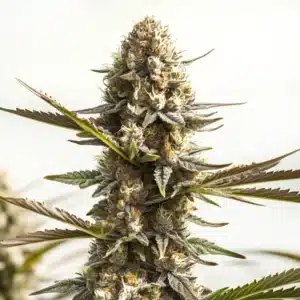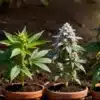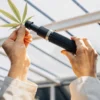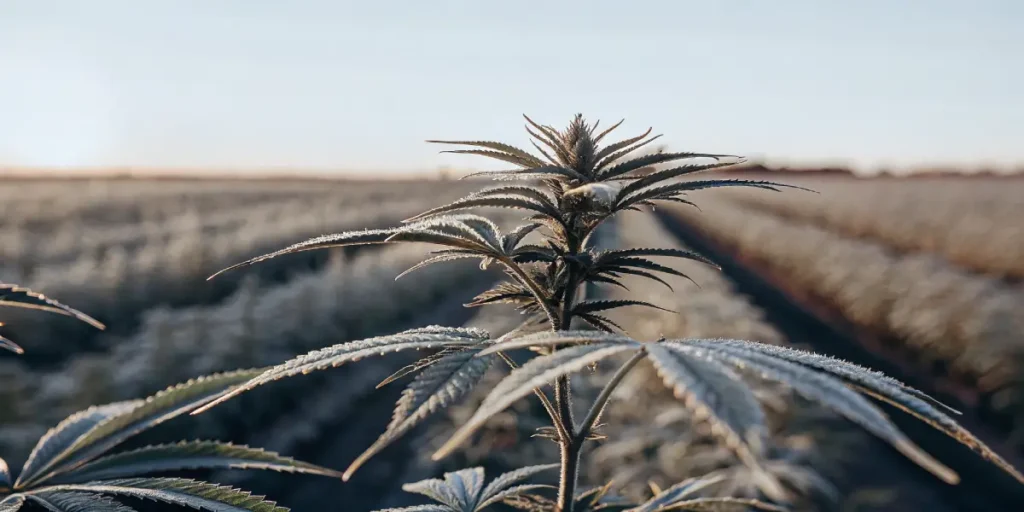
How Cannabis Produces Latex
Many might wonder how cannabis produces latex and why it’s significant. The latex in cannabis is a milky fluid found in the plant’s tissues, particularly in the stems and leaves. This substance plays a crucial role in the plant’s survival and offers various benefits. While cannabis is widely known for its buds, the latex it produces can often go unnoticed.
Cannabis latex production process is natural, and it’s fascinating to see how the plant utilizes this substance. The latex serves as a protective mechanism, helping the plant heal from wounds and deterring pests. This natural secretion is a testament to the plant’s resilience and adaptability in different environments.
Recommended Strains
Amnesia
|
|
THC | 15% - 20% (Medium) |
|
|
Type | Feminized |
|
|
Yield | Medium |
|
|
Phenotype | 30% Indica / 70% Sativa |
Blue Dream
|
|
THC | 17% - 24% (Medium) |
|
|
Type | Feminized |
|
|
Yield | High |
|
|
Phenotype | 50% Indica / 50% Sativa |
How cannabis plant secretes latex and its formation is an intriguing subject for growers. Knowing how this latex forms and its benefits can enhance your growing techniques. Delving into this process provides insights into how each component of the cannabis plant works harmoniously for its growth and protection.
The Cannabis Latex Production Process
To understand how cannabis produces latex naturally, it’s essential to look at the plant’s biology. The latex is stored in specialized cells called laticifers. These cells are found throughout the plant, especially in the stem and leaves. When the plant is injured, these cells release latex to seal the wound.
This process is comparable to how our bodies form scabs to protect cuts. When the plant’s surface is broken, latex flows to cover the area, preventing infections and warding off herbivores. It acts as both a physical barrier and a chemical deterrent, making cannabis a resilient plant.
Knowing cannabis latex formation involves recognizing the plant’s innate ability to adapt to environmental changes. This intricate process not only protects the plant but also facilitates nutrient transport and storage. The latex acts as a conduit, ensuring that vital compounds are distributed effectively throughout the plant’s structure.
Moreover, the production process is influenced by genetic factors, indicating why some strains are naturally more proficient at latex production. This genetic predisposition can be leveraged by growers to select and breed plants that are better equipped to thrive in challenging conditions. As such, the knowing of cannabis latex production process becomes integral to successful cultivation.
Benefits of Cannabis Latex
Cannabis latex uses and benefits extend beyond the plant’s self-defense. For growers, knowing this can improve cultivation methods. The latex can indicate plant health; a healthy plant with active latex production is better equipped to handle environmental stresses.
Growers might notice that some strains exhibit more latex production. For instance, strains like Critical are known for their robust resilience, partly due to their latex production. Observing these traits can guide growers in selecting strains best suited for their conditions.
In addition to its protective qualities, cannabis latex serves as an indicator of plant vitality. High levels of latex production suggest a robust and well-nourished plant, capable of withstanding various biotic and abiotic stresses. This insight can help growers anticipate and prevent potential issues before they escalate.
Another benefit lies in the role of latex in signaling plant maturity. As the plant progresses through its growth stages, changes in latex characteristics can provide clues about the optimal timing for harvest. This not only maximizes yield quality but also aligns harvesting practices with the plant’s natural life cycle, ensuring environmental sustainability.
Promos & Deals
How Cannabis Plant Secretes Latex
The secretion of latex in cannabis is a dynamic process. As the plant grows, its demand for protection increases, triggering the production of more latex. This secretion is influenced by environmental factors such as temperature, humidity, and light.
Experienced growers often adjust these factors to optimize latex production, thus enhancing the plant’s overall health. For example, a slightly higher humidity level can encourage latex flow, providing better protection against pests. Adjusting grow lights can also impact how cannabis produces latex, with some lighting conditions promoting more robust secretion.
Knowing how cannabis plant secretes latex involves recognizing the intricate balance between environmental stimuli and the plant’s physiological responses. This secretion is a complex interplay of internal signaling pathways that respond to external cues, ensuring the plant’s survival and reproductive success.
The secretion process is also linked to the plant’s adaptive strategies. In environments where threats are prevalent, the plant may increase its latex production as a preemptive defense mechanism. This adaptability highlights the evolutionary advantage that latex provides, allowing cannabis to flourish in diverse ecosystems.
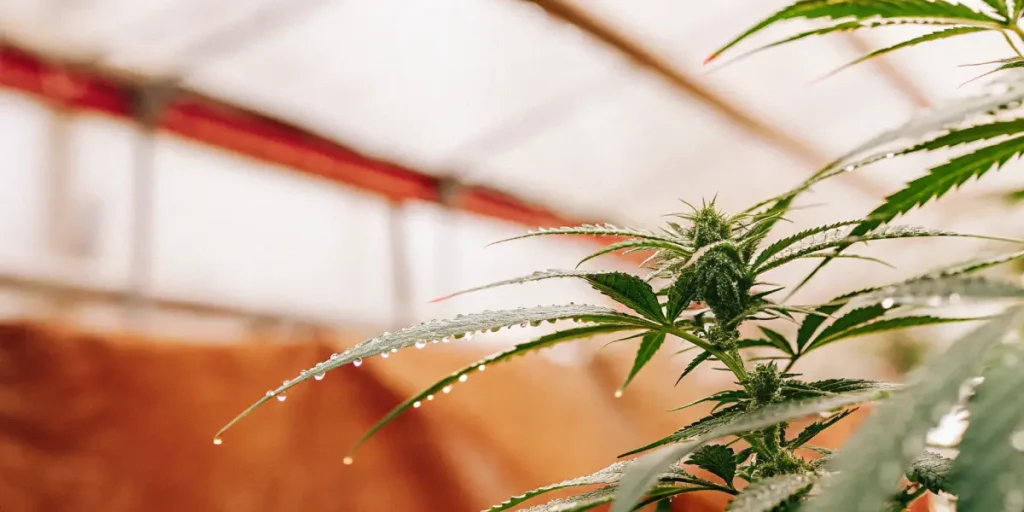
Real-Life Examples of Latex Production
Real-world cultivation offers plenty of examples of how cannabis latex plays a role. For instance, in outdoor grows, plants exposed to more natural threats often develop thicker latex as a defense mechanism. Growers of Amnesia often report this phenomenon, as this strain thrives in outdoor settings.
Indoor growers can manipulate conditions to mimic outdoor threats, prompting the plant to produce more latex. By strategically introducing stressors, such as slight pruning or controlled pests, growers can stimulate latex production, resulting in tougher plants.
In large-scale operations, knowing how cannabis produces latex is crucial for managing plant health across extensive cultivations. For example, commercial growers may observe that plants grown in high-altitude regions with cooler climates exhibit enhanced latex production, providing insights into site-specific cultivation strategies.
Furthermore, anecdotal evidence suggests that growers who incorporate organic practices often see a more pronounced latex response. The avoidance of synthetic pesticides and fertilizers might encourage the plant’s natural defense mechanisms, leading to a richer production of latex, which in turn supports overall plant health.
Practical Tips for Enhancing Latex Production
To boost latex production, growers should focus on plant health. Regularly inspect plants for signs of stress and adjust care routines accordingly. Providing balanced nutrients and maintaining optimal environmental conditions can promote healthy latex secretion.
Pruning is another effective technique. By carefully trimming the plant, growers can encourage new growth and stimulate latex production in response to the cuts. This method can also improve airflow and light penetration, further supporting plant health.
Another practical tip is to engage in selective breeding programs that focus on enhancing latex-related traits. By selecting parent plants with superior latex production, growers can develop strains that naturally exhibit higher resilience and adaptability.
Additionally, knowing cannabis latex formation can be further enhanced by documenting environmental conditions and plant responses over time. This data-driven approach allows growers to fine-tune their cultivation practices, ensuring that each plant receives the optimal conditions to express its full latex-producing potential.
Common Questions About Cannabis Latex
Does cannabis produce latex naturally in all strains? Yes, but the amount and characteristics can vary. Some strains are more predisposed to latex production due to their genetic makeup. For instance, strains like Critical and Amnesia are known for their resilience, partly due to their natural latex protection.
Are there any uses for cannabis latex beyond plant protection? While primarily for defense, research is ongoing into potential applications. The sticky nature of latex could have uses in natural adhesives or even as a component in biodegradable products. However, these applications are still in the experimental stages.
Knowing how cannabis plant secretes latex helps growers appreciate its role beyond mere plant protection. As research progresses, the potential for novel applications of cannabis latex in various industries continues to capture interest, from sustainable agriculture to innovative materials science.
Does cannabis produce latex naturally across all environments? While it does, the degree of production may greatly depend on the specific environmental conditions. Plants in optimal growth environments tend to produce more robust latex, whereas those in suboptimal conditions might exhibit reduced secretion.
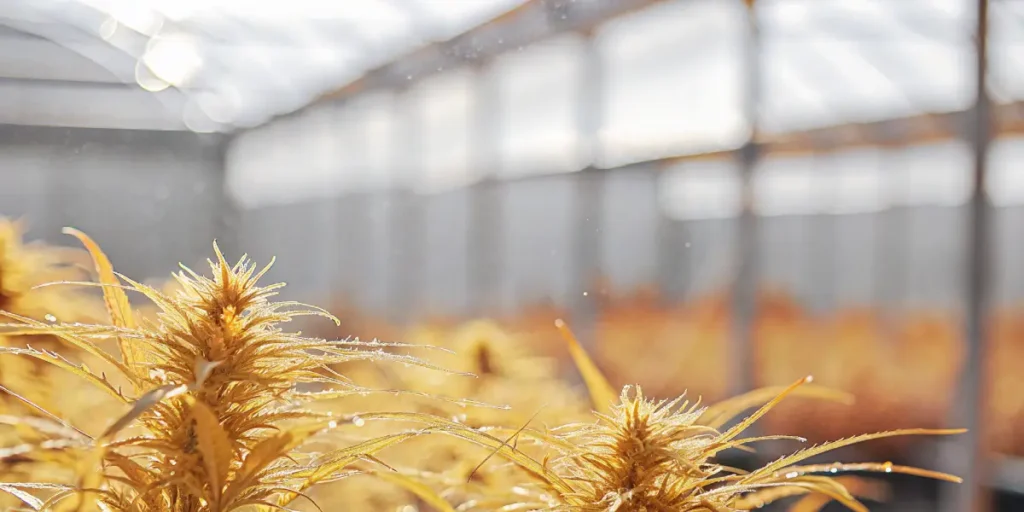
FAQs
Does cannabis produce latex naturally in all environments?
Cannabis can produce latex naturally across various environments, but the extent may differ. In ideal conditions, with balanced temperature and humidity, plants might generate more latex. Conversely, in harsher climates, the plant may struggle and produce less.
Knowing environmental impacts is crucial for growers aiming to optimize latex production. By mimicking natural stressors in controlled settings, growers can enhance latex output. This adaptability is one reason why cannabis thrives in diverse settings.
The adaptability of cannabis in producing latex under different environmental conditions is a testament to its resilience. Growers who understand cannabis latex uses and benefits can tailor their cultivation practices to harness this natural defense mechanism, ensuring robust plant health.
Moreover, the varying levels of latex production in different environments provide valuable insights for breeding programs. By selecting strains that perform well under specific conditions, growers can enhance their crop’s ability to withstand environmental stresses, ensuring a consistent and high-quality yield.
Can you improve latex production artificially?
Yes, growers can influence latex production through artificial means. Techniques such as pruning or introducing controlled stressors like mild pest exposure can trigger increased latex secretion. These methods encourage the plant to strengthen its natural defenses.
Optimizing light and nutrient regimens also plays a role. By providing the right balance, growers support the plant’s health, indirectly boosting latex production. Each plant’s response may vary, so observation and adjustment are key to achieving the best results.
Artificially enhancing latex production requires careful consideration of the plant’s needs and responses. By experimenting with different cultivation techniques, growers can discover new ways to stimulate latex production, thus reinforcing the plant’s natural protective mechanisms.
Additionally, how cannabis produces latex can be influenced by the strategic use of growth regulators. These compounds, when used judiciously, can enhance the plant’s latex production by altering its hormonal balance, promoting increased secretion in response to environmental triggers.
What strains are best for high latex production?
Strains like Critical, Amnesia, and Blue Dream are known for their robust latex production. These strains have been cultivated for their resilience, with latex playing a significant role in their defense mechanisms.
Choosing the right strain depends on your growing conditions and goals. If latex production is a priority, opting for these resilient strains could provide a competitive edge in cultivation.
Knowing cannabis latex formation is crucial in selecting the right strains for cultivation. By focusing on strains with proven latex-producing capabilities, growers can optimize their crop’s defensive traits, ensuring better resilience against environmental challenges.
Beyond traditional strains, emerging hybrids also offer promise in enhancing latex production. By crossbreeding strains with complementary traits, growers can develop new varieties that exhibit superior latex secretion, providing exciting possibilities for future cultivation endeavors.
Are there any downsides to high latex production?
While high latex production indicates a healthy plant, it can sometimes attract pests that feed on latex. Certain insects find the latex appealing and may target these plants. Regular monitoring and pest management are essential in such cases.
Additionally, excessive latex can sometimes complicate the harvesting process, as it may cause stickiness. However, this is a minor concern compared to the benefits of a robust defense system.
In some cases, high latex production may lead to increased maintenance requirements. The sticky nature of latex can complicate equipment cleaning and handling, necessitating additional efforts to ensure efficient processing and harvesting.
Furthermore, the presence of pests attracted to latex can pose challenges in integrated pest management. Growers must balance the benefits of high latex production with proactive pest control measures to maintain plant health and productivity.
How does cannabis latex compare to other plant latex?
Cannabis latex serves a similar function to latex in other plants, like rubber trees or fig trees, acting as a protective barrier. However, the properties and composition can differ significantly between species.
Unlike rubber tree latex, which is harvested for commercial purposes, cannabis latex is primarily for the plant’s use. Its unique properties make it an interesting subject for further study and potential applications.
Knowing how cannabis produces latex in comparison to other plants highlights the diversity of latex functions in nature. Each plant species has evolved its latex composition to suit its specific ecological niche, resulting in a wide array of protective and adaptive functions.
Moreover, the study of cannabis latex offers insights into the broader applications of plant-based materials. As researchers continue to explore the potential uses of latex, cannabis stands out as a promising candidate for innovations in sustainable materials and natural product development.


